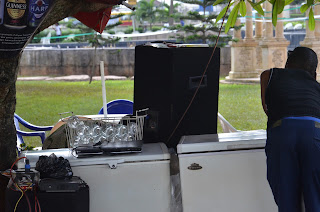For this exercise , i went out to see what images i can make of vertical and horizontal shots. What i did was to take vertical and horizontal shot of each subject.
 |
| Fig 1: Shopping Complex |
 |
| Fig 2: Shopping complex |
For this exercise , i went out to see what images i can make of vertical and horizontal shots. What i did was to take vertical and horizontal shot of each subject.
 |
| Fig 3: Palm tree |
 |
| Fig 4:Palm tree |
 |
| Fig 5: Road in Benin city |
 |
| Fig 6: Road |
 |
| Fig 7: Residential complex |
 |
| Fig 8:Residential complex, vertical |
 |
| Fig 9; Uncompleted building |
 |
| Fig 10:Uncompleted building |
 |
| Fig 11:Line of palm trees |
 |
Fig 12: Line of palm trees
|
 |
| Fig 13 |
 |
| Fig 14 |
 |
| Fig 15: Painting on the wall |
 |
| Fig 16: Painting on the wall |
 |
| Fig 17: Fish: Vertical |
 |
| Fig 18:Fish, Horizontal |
 |
| Fig 19: Satellite dish |
 |
| Fig 20: Satellite dish |
There tends to be some differences in perspectives in vertical and horizontal frrames. The horizontal frame absorps more of an area. I tend to think that vertical shots are very good for portrait pictures. In some instances though with my lens zoomed in and very close to the subject, you need to look very well to observe the difference in the vertical and horizontal shots as in the image of the fish in Figs 17 and 18.
Horizontal frames seem to flow more naturally with the eye. In the Photographers Eye, it says our natural view of the world is binocular, so a horizontal picture format seems entirely normal. The horizontal frame influences the composition of an image, but not in an insistent outstanding way. It conforms to the horizon, and so to most overall landscapes and general views. (Michael Freeman, 2007).
For naturally vertical subjects, the elongation of a 2:3 frame is an advantage and the human figure, standing is the most commonly found vertical subject. (Michael Freeman , 2007). The image of the woman in dark dress in Fig 14 illustrates vertical effect on portrait.
































































